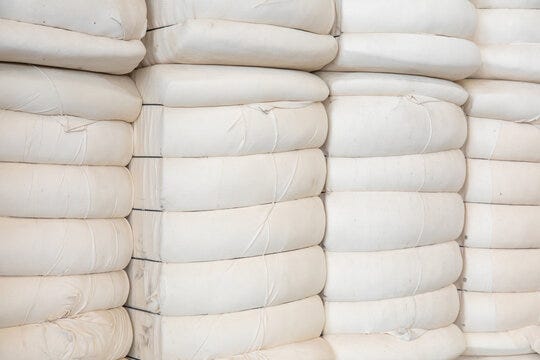Increased transparency in cotton industry: CCI introduces QR code traceability for bales.
The Cotton Corporation of India (CCI) has taken a significant step towards enhancing transparency in the cotton industry by introducing a QR code traceability system for each cotton bale. This initiative, announced by CCI chairman Lalit Kumar Gupta, aims to provide detailed information on the fiber to buyers and consumers.
By scanning the QR code on a bale, users will gain access to critical details about the cotton, including:
Procurement: Information on the source of the cotton, including the farm or region where it was grown.
Processing: Details about ginning and processing facilities involved in handling the cotton.
Sale: Information on the sale of the cotton, potentially including the buyer.
Fiber quality: Data on the cotton's key quality parameters such as staple length, micronaire, and strength.
This is expected to benefit various stakeholders in the cotton value chain:
Buyers: Textile mills and manufacturers can make informed decisions based on the specific characteristics of the cotton they are purchasing.
Consumers: Increased awareness about the origin and quality of the cotton used in their clothing.
Farmers: Potential for premium pricing for high-quality cotton with verifiable traceability.

The CCI's QR code traceability system aligns with the growing demand for sustainable and ethical sourcing practices in the textile industry. By offering greater transparency, the CCI is promoting responsible cotton production and consumption.
According to Committee on Cotton Production and Consumption (COCPC), total cotton supply for the current 2023-24 season, ending September 30, is estimated at 398.38 lakh bales of 170 kg each. This includes an opening stock of 61.16 lakh bales, production of 325.22 lakh bales, and imports of 12 lakh bales. In comparison, the previous season's total supply was 390.68 lakh bales, with an opening stock of 39.48 lakh bales, production of 336.60 lakh bales, and imports of 14.60 lakh bales.
The closing balance for the current season is expected to decline to 47.38 lakh bales from 61.16 lakh bales last season. Total demand is projected to increase to 351 lakh bales this season from 329.52 lakh bales last year. Notably, exports are anticipated to rise from 15.89 lakh bales to 28 lakh bales this season.
